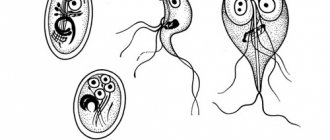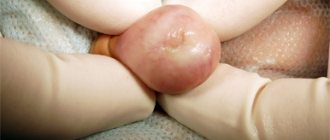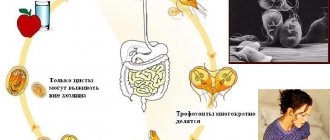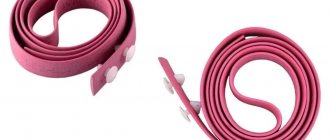The child’s body is quite weak, the immune system is not yet fully formed, so children very often suffer from various diseases. First of all, the respiratory system suffers, because it is through it that the child comes into contact with the outside world, this can lead to frequent inflammatory diseases.
Let's try to talk in more detail about such a disease as laryngitis, consider its main symptoms and methods of treatment.
Laryngitis is an inflammation of the larynx, most often caused by infectious agents - viruses or bacteria. Quite often, after suffering viral infections, for example, acute respiratory viral infections, influenza and others, inflammation of the structures of the larynx begins, most often the space under the vocal cords. Given this fact, endoscopic laryngoscopy is so important.
The disease is especially dangerous for the youngest patients. Young parents need to be able to immediately identify the first symptoms in order to take timely measures and prevent complications. In turn, this affects the development and growth of the young organism, because only if there is a normal supply of oxygen do all the necessary intracellular processes occur. Laryngitis is divided into acute and chronic.
Classification of laryngitis
The most common form is the catarrhal form, which is the least dangerous. The symptoms of the onset of the disease are similar to those of most diseases of the respiratory system: low fever, sore throat, dry cough, itching. In children, respiratory failure is possible, as the larynx swells greatly.
When the mucous membrane and its tissues grow, a hypertrophic form of the disease is identified. As they expand, they block the lumen of the larynx, which is why oxygen poorly enters the body.
Various diseases of the circulatory, cardiovascular systems, and liver can cause hemorrhages in the ligaments and mucous membrane. With this hemorrhagic form, the main symptoms that make it possible to distinguish this form of the disease from others are a dry cough, dry mouth, sputum production, possibly with blood, and a feeling that something is blocking the throat. If any of the symptoms occur, the child should be seen by a doctor.
More dangerous is subglottic, or laryngotracheitis, when the inflammation of the disease reaches the trachea.
In very rare cases, phlegmonous laryngitis occurs. Its causes may be severe infectious diseases, various injuries, and especially reduced immunity. This form of laryngitis is accompanied by high fever, severe sore throat, and possible difficulty breathing. Lymph nodes often become inflamed. At the appointment, the ENT specialist will notice red, inflamed mucosa with small areas of dead tissue.
In adults, an atrophic form occurs, in which the mucous membrane begins to thin.
It has been noticed that a third of children under the age of two suffer from laryngitis; as a rule, it is diagnosed together with acute respiratory infections, tracheitis or bronchitis.
Particular attention should be paid to children suffering from allergies. Not all drugs are suitable for such babies; it is better not to use ointments based on essential oils, because they can increase swelling of the larynx; you can use proven folk methods, plants, and medications.
Introductory information
Laryngitis is an inflammatory process of the larynx with sputum production, which is promoted by various pathogens. Both adults and children of different age groups are susceptible to the occurrence of a pathological condition, especially children with weakened immunity and concomitant diseases. In most cases, the disease proceeds without significant complications; the process of complete recovery occurs in 7-10 days.
The acute form can develop due to respiratory infections, acute respiratory viral infections, influenza, and adenovirus infection. It can also occur as a concomitant factor in measles, diphtheria, tuberculosis and whooping cough.
Classification of pathologies of the upper respiratory tract:
- acute laryngitis manifests itself as a separate or concomitant pathology, the main signs are the primary manifestation and the effectiveness of therapy, after which after two weeks there are no consequences or complications for the body;
- the chronic form can occur due to untreated pathology and inflammation in the larynx and upper respiratory tract. It is characterized by the production of sputum. The key factors of the pathological condition are smoking, which increases the volume of sputum, and the ligaments being under constant strain.
In the absence of timely treatment of laryngitis in adults, the pathological condition turns into a chronic form and contributes to certain complications. Mostly they are associated with respiratory problems, since the larynx is an organ of the respiratory system. The main complications include:
- bronchitis;
- loss of sonority and beauty of the voice;
- false croup - mainly occurs in children. Inflammation contributes to whistling and asthma attacks;
- airway obstruction;
- mediastinitis - inflammation quickly occurs in the space between parts of the adult’s larynx, which often ends in death;
- laryngeal paresis – dangerous due to respiratory dysfunction;
- phlegmon of the neck is an acute purulent inflammation that affects the upper respiratory tract. It develops in the absence of therapeutic measures and is an indication for surgical intervention.
Why does laryngitis appear?
- Each organism is individual, so it is impossible to say for sure what causes laryngitis. Laryngitis is usually caused by several factors, including:
- Various colds (measles, acute respiratory infections, flu, others).
- A reaction to allergens (this can be paints, dust, wool), quite often the disease occurs after the family has moved to a new apartment, which has been renovated and furniture has been purchased. Hypothermia. With a weakened young body, even an ordinary draft can cause laryngitis
- Anatomical features of the structure of the respiratory organs: with a narrow larynx, laryngitis can even lead to a complete narrowing of the larynx, after which breathing becomes very difficult.
- Parents should monitor the air quality in the room where the baby is. Dry air, smoky air, dusty air, as well as air containing large amounts of exhaust gases are undesirable.
- A mechanical factor cannot be excluded when the larynx is severely strained or damaged. This can happen with long or loud singing, screaming, gastroesophageal disease, or foreign bodies.
The risk group includes children with chronic diseases of the nasopharynx, who have impaired breathing or have dental diseases.
Symptoms of laryngitis
Usually the inflammatory process begins suddenly, i.e. it manifests itself in an acute form. The child's family may not notice a slight change in voice. Due to the fact that the throat hurts greatly when swallowing, the baby may have a decrease in appetite, difficulty breathing, a dry cough, and hoarseness. The cough is especially pronounced at night and in the morning, and attacks of suffocation are possible.
- Symptoms of laryngitis include:
- Slight increase in body temperature;
- Hoarseness or hoarseness, loss of voice;
- Difficulty breathing due to swelling and spasms;
- Headache;
- Soreness, dry mouth;
- Severe dry cough, which may produce a small amount of sputum.
Parents of a baby can distinguish laryngitis by the following signs: lethargy, nasal discharge, moodiness, coughing, screaming, which is accompanied by wheezing, whistling, noise in the lungs. It is also worth paying attention to the nasolabial triangle. A bluish tint may indicate progression of the disease.
During the examination, the doctor will see redness of the mucous membrane and swelling. With chronic laryngitis, an itchy throat almost always bothers you, there is a desire to clear your throat well, and your voice may change.
- In what cases is it necessary to call an ambulance?
- Normal breathing is disrupted - shortness of breath occurs, breathing becomes intermittent. Sometimes parents may not observe these symptoms in the baby, but asphyxia still occurs and cardiovascular failure occurs.
- False croup is a narrowing of the lumen of the larynx as a result of edema. In this case, breathing is difficult and may stop. At the first manifestation, parents should call an ambulance and provide first aid to the child. Diseases of the nervous system that are chronic, allergies, can significantly worsen the baby’s condition.
- When a child coughs, he gets scared, lacks oxygen, and has a high fever for a long time; in this case, parents should immediately call emergency help.
- If false croup occurs, you should first try to relieve swelling and spasm so that breathing can be restored. The first step is to do alkaline inhalation. Parents should not put the child down; this will make breathing difficult. It is advisable to humidify the room; you can make a hot foot bath. In the hospital, the child will be given inhalations, drug therapy, and oxygen therapy. Hormonal treatment is possible; antihistamines and antispasmodics are also prescribed.
- Narrowing of the larynx can occur in four stages, each of which smoothly flows into the next, so do not delay contacting a doctor.
- In the first degree, the child breathes calmly, but when receiving physical activity, the upper part of the sternum and part of the abdomen above the navel are retracted. During the second stage, the child becomes agitated, turns pale, and the nasolabial area acquires a bluish tint. Organ tissues and the brain experience oxygen starvation. The third degree is characterized by difficulty breathing, which is accompanied by noise, sweating appears, and fingers may turn blue. The fourth degree, in which a slow heartbeat, loss of consciousness and suffocation occurs, is best avoided.
Clinical picture
As a rule, pathology manifests itself gradually. At first there are no symptoms. Subsequently, weakness, malaise, and possible fever are noted.
Unpleasant sensations occur in the larynx area. These are pain, burning, tickling, tickling and dryness. Afterwards a cough is registered, at first it is dry, then a copious amount of productive sputum appears. It may contain mucus, as well as admixtures of pus and sometimes blood.
As a result, the larynx becomes very inflamed, swollen, and becomes bright red. The voice shrinks, becomes hoarse, low and sometimes can disappear completely.
Treatment of laryngitis
Laryngitis should be treated comprehensively and to avoid serious consequences, you should follow all doctor’s prescriptions.
- Bed rest is required. — It is worth reducing the load on the vocal apparatus as much as possible, i.e. The child needs to talk as little as possible, because this is the condition that will give the fastest result. It is very important for children to take care of their vocal cords, because it is at a young age that the voice is formed, and too much stress or illness can lead to various defects. — In the room where the child is, there must always be moist air, which can be achieved using a special humidifier, regular ventilation, and it is also necessary to use an air purifier after each ventilation. — The child should drink as much as possible. Do not give very sweet liquid and let it be a little warm. Compotes, various fruit drinks, water, herbal teas, milk - all this helps to remove phlegm. - It is necessary to exclude foods that can irritate the mucous membranes. You can't eat hot or cold, or soda. Nutrition should be balanced with the necessary amount of vitamins.
Treatment of laryngitis with medications
Acute therapy
Treatment of laryngitis for adults is prescribed medicinal and non-medicinal, depending on the characteristics of the disease, causes, symptoms and special indications.
Non-drug therapies:
- if possible, completely limit vocal activity to allow the cords to return to normal. You can’t not only shout or speak loudly, but also talk in a whisper. In most cases, such a ban lasts up to two weeks. If the voice is a direct part of professional activity, after getting rid of the disease, it is necessary to visit a phoniatrist for periodic examinations within 2-3 months;
- phonopedia – measures aimed at activating and normalizing the vocal cords;
- physiotherapy - microwaves, phonophoresis and electrophoresis.
Drug treatment of acute laryngitis in adults involves the use of a complex of medications prescribed after the causative agent has been identified and an accurate diagnosis has been made. Features of treating laryngitis with medications:
- Antibiotic therapy is necessary in the presence of inflammatory processes in the throat, purulent exudation, and high fever. Also, antibiotics are used if there is no response from anti-inflammatory drugs within 4-5 days, and if the disease has spread to the lower respiratory tract, there is green sputum. An antibiotic is prescribed depending on the causative agent of the pathology in an adult after conducting appropriate blood tests and sputum from the throat;
- antihistamines to eliminate the causes of sore throat. This group of drugs is aimed at relieving swelling of the larynx;
- antifungal agents are used for fungal pathogens in adults; they help cure the disease with complex therapy;
- If there is green sputum or a strong cough, expectorants and antitussives are prescribed to remove phlegm from the throat. They also relieve irritation of the mucous membrane. You can use mucolytics in the form of inhalations for adults, so they penetrate deep into the throat into the foci of inflammatory processes and act most effectively. Such inhalations in combination with other medications allow you to quickly and effectively remove green phlegm.
Antihistamines
With the help of anti-allergy medications, swelling of the mucous membrane is relieved.
It is better to take such medications before bedtime, then the child will be able to get enough sleep. Antitussives, expectorants
Currently, there are a huge number of cough medications in pharmacies, however, it is the attending physician who must choose the appropriate one.
If your baby has a frequent paroxysmal cough, the doctor will recommend medications that help soften it; this may be after the cough becomes wet, you should choose other medications. Aerosols, gargles, tablets
You can gargle a child in many ways, which the doctor will tell you in detail, but you should carefully monitor the child’s reaction, because even herbal infusions for gargling can cause an allergy and worsen the situation.
The pediatrician will recommend the most suitable aerosol or lozenges. Antipyretics
If a child does not tolerate a temperature above 38ºC, parents should give the baby an antipyretic; if the temperature lasts too long, an ambulance must be called to prevent complications.
Physiotherapy
Physiotherapy gives good results in the treatment of this disease.
Electrophoresis on the larynx, microwave therapy, ultraviolet irradiation, and UHF are usually prescribed. In case of voice defects, corrective classes are carried out with a speech therapist. Antibiotics for laryngitis
In some cases, doctors use antibiotics for treatment: - Bacterial environment, its presence can be determined after laboratory tests, diagnostics, taking a smear, which should be prescribed by the attending physician. — In some cases, doctors play it safe in order to avoid serious consequences. — Intoxication of the body, which can manifest itself in the form of chills, high fever, loss of appetite, and general weakness.
Taking an antibiotic is not the most effective treatment, since bacteria cause the disease in rare cases. List of antibiotics that a pediatrician usually prescribes: - Antibiotics for
When treating with antibiotics, do not forget to take probiotics so that the flora is not disturbed.
Inhalations
In case of illness, warm dry compresses are prescribed on the neck area, frequent drinking of alkaline drinks, and, of course, inhalation with special means using a nebulizer.
If there is no elevated temperature, you can put jars or mustard plasters. If you don’t have a nebulizer for the procedures, you can use steam inhalation. Steam inhalations: how to do them
Now inhalation is used for many diseases of the respiratory system. However, it is worth considering that inhalations will be performed on a child, so there are some rules that must be followed.
Inhalation should not be done after physical activity; it is better to do it twice a day, preferably between meals. You should inhale through your mouth so that the medications have the maximum effect on the source of the disease, and exhale through your nose. You cannot talk or eat during the procedure and for half an hour after it. How to do steam inhalation? If the child is still small, you need to pick him up and hold him close to the container with the boiling solution. You should be very careful not to burn your baby. Parents can sit an older child in front of a teapot with a funnel on the spout. Relatives should ensure that the child breathes calmly and evenly as usual. The list of products that can be used for the procedure depends on the presence of allergic reactions in the baby: - Herbal infusions (calendula, sage, coltsfoot and others); — Inhalation with essential oils, a couple of drops is enough (cedar, juniper, and others); — Alkaline solution (3 tablespoons sea salt, 3 teaspoons soda, 5 drops of iodine).
Inhalations should only be carried out under parental supervision. Do not make the solution too hot, as this may worsen the child’s condition. The baby may accidentally knock over a container of hot liquid, so you need to carefully monitor him.
In some cases, the pediatrician prescribes inhalations with several medications. You should start with bronchodilators, and after 15-20 minutes, inhale with an expectorant. The child should be given a good cough, and then anti-inflammatory medications should be used.
What to do?
- Call an ambulance immediately if you panic and don’t know what to do or if your child has had an attack for the first time. If you know what to do, then watch for 10-15 minutes.
- Provide access to clean and cool air (balcony or bath with cold water running). The child should breathe slowly and deeply.
- If there is a nebulizer in the house, then give your baby inhalation with inhaled glucocorticosteroids, for example, budesonide once in a dose of 2 mg or twice 1 mg with an interval of 30 minutes. It is worth understanding that only a doctor selects the drug!
- Give your baby a warm, slightly sour drink or plain water.
- If you have a fever, bring it down with antipyretics.
- Try to calm down yourself and calm your child. Don't let your baby cry and distract him with something.
What's not allowed?
- Cough syrups should not be given.
- You cannot scare a child, especially with panic.
- Do not spray sprays into the throat.
- Antibiotics will not help with stenosis.
- Hot steam “over potatoes” is not allowed.
- Berodual will not help with stenosis.
It is important to understand that while you are waiting for an ambulance, an attack of false croup can be forgiven on its own.
If the attack doesn't go away...
An ambulance comes into play, whose doctors will give or repeat inhalation of budisonide (Pulmicort) to the child, or give a glucocorticosteroid injection. It depends on the severity of the attack. With increasing laryngeal stenosis and respiratory failure, the child is hospitalized.
With croup, it is important not to panic and try not to frighten the child, as this can only worsen the situation. Keep in touch with your pediatrician. If you have already experienced an attack of false croup, then follow all the instructions: inhalation, if necessary, access to fresh cool air. It is important to remember that false croup can go away on its own, but much depends on its severity. If you are experiencing an attack for the first time, and you are panicking and don’t know what to do, then immediately call an ambulance! Be healthy!
Nebulizer: inhalation is easy
It is very convenient to carry out inhalations using a nebulizer. Their only drawback is that they cannot be used for procedures using solutions of essential oils and herbal decoctions. As a rule, alkaline water and special ready-made solutions, which can be purchased at the pharmacy, are poured into nebulizer sprayers. But some nebulizer models have special attachments that allow you to carry out procedures using herbs and oils.
Why are nebulizers so popular? They can be used even in small patients, even during sleep, safety (since the steam temperature will not be too high), high efficiency (the required amount of the drug is inhaled).
The following drugs are used for inhalation: - Medicines that can only be prescribed by the treating pediatrician; — Soda solution; — Herbal decoctions and essential oils, but it is worth considering that not all nebulizers are designed for this; — Alkaline mineral water (Borjomi); - Garlic juice.
Additional recommendations
Sprays should be used with extreme caution, especially in young children. It has been noticed that in some cases a strong jet can cause a spasm of the back wall of the pharynx. Don't forget about a possible allergic reaction. It is necessary to pay attention to the child’s breathing not only during illness, but also after it. Breathing should be uniform and through the nose.
Gargle with herbal decoctions and solutions several times a day.
If your baby's throat is very swollen, warm foot baths, warming and massage of the calf muscles can help. As a result of such actions, blood circulation will increase and swelling of the vocal cords will decrease.
Help with stenotic laryngotracheitis in children
Acute stenosing laryngotracheitis is a very serious and unpredictable condition. Most often occurs as a result of a viral infection in children with allergies. The main symptoms are lack of air, wheezing, anxiety, and a “barking” cough. It is noteworthy that this condition is present only when the child is in a horizontal position; when it changes (the baby gets up, sits down), the attack either becomes less intense or stops altogether.
First aid for stenotic laryngotracheitis in children:
- warm mustard foot bath or mustard plasters on the calf muscles;
- vasodilator nasal drops;
- inhalation with soda;
- warm drink (milk with soda);
- antihistamine, ground into powder.
If you suspect the onset of stenosis, immediately call an ambulance.








